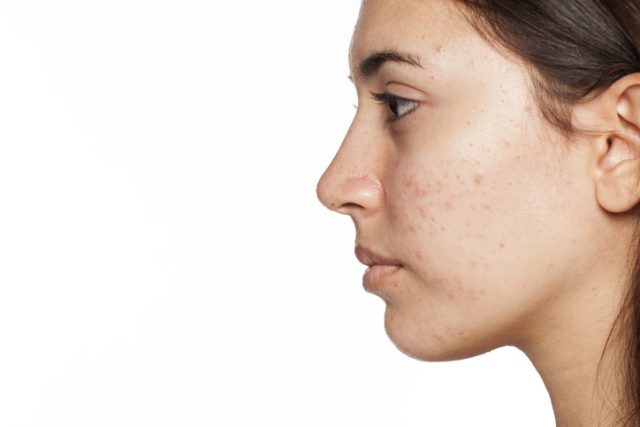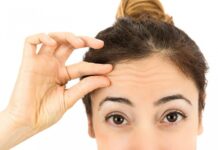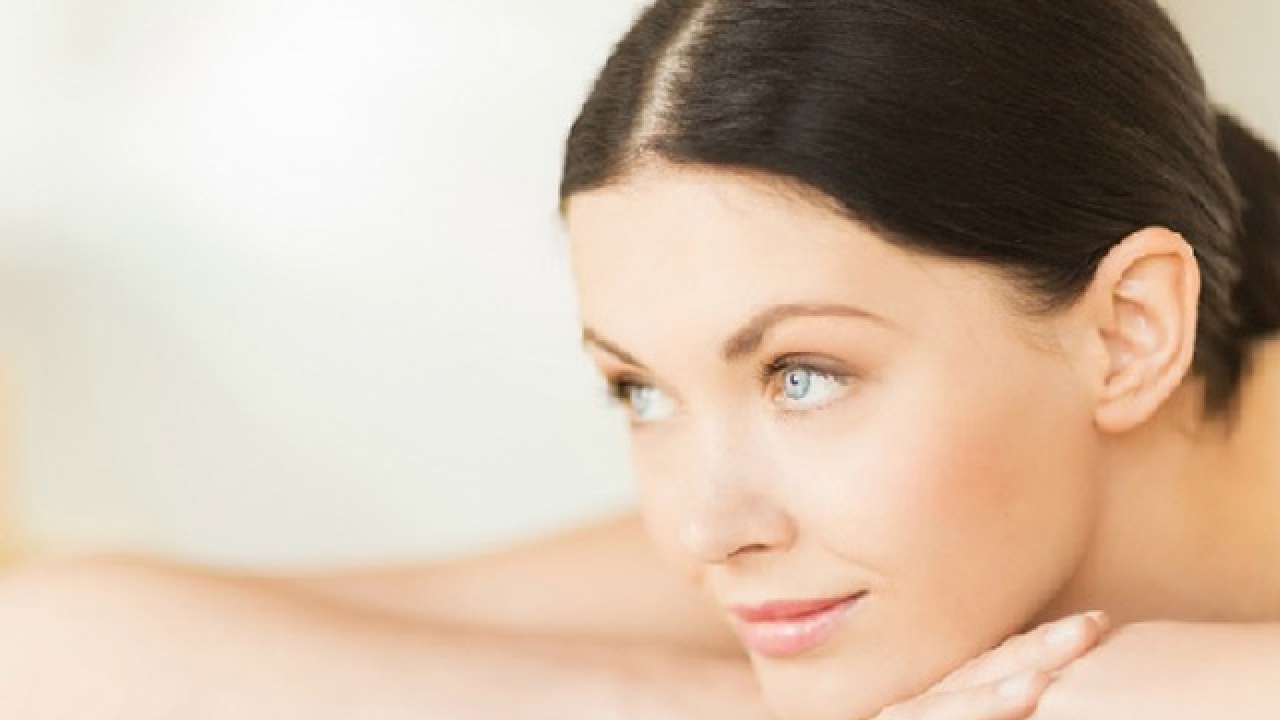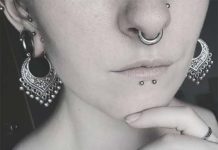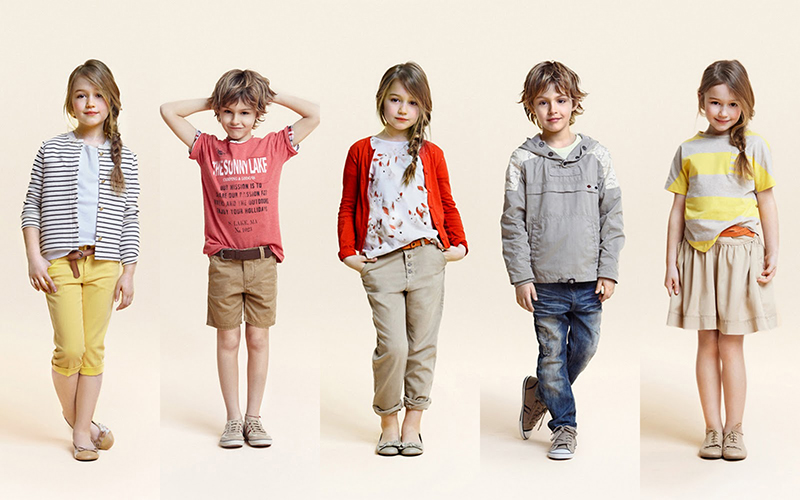Cystic acne is one of the most severe types of acne, and it occurs when the pores in the skin get blocked, which in turn leads to inflammation and infection. Cystic acne is uncommon as compared to other types of acne. It can be painful and emotionally distressing at the same time, as it impacts facial appearance adversely.
Cystic acne is a severe issue, and it is difficult to deal with. It not only affects your appearance but also damages your skin. Now you must be thinking about how to get rid of cystic acne. Here is an article with all you need to know about cystic acne, including symptoms, causes, and skincare tips. But before analysing the skincare tips for the treatment of cystic acne, let us have a look at the symptoms and causes of cystic acne.
What is Cystic Acne?
Cystic acne is a type of acne that is related to painful and long-standing nodules of the face, back, chest, and neck.
Pimples occur when the skin pore gets clogged and, most of the time, with dead skin cells. Many times, bacterias also get clogged in the skin pores, which leads the skin area to become swollen and red.
Cystic infection occurs when the infection deeper into the skin, which in turn leads to the creation of bumps full of pus. If the cyst on the skin bursts, it leads to the spreading of the infection causing more breakouts.
If you have cystic acne, no need to worry, you can get rid of these breakouts. Cystic acne can last for many years and can impact the skin negatively by leaving scars.
Cystic acne present on forehead, chin, and cheeks are most noticeable usually; however, it can also be present on the chest, arms, shoulder, and other parts of the body.
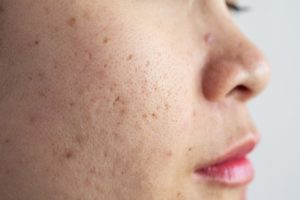
Symptoms of Cystic Acne
Symptoms produced by ace are known to all of us. Cystic acne is more clearly visible as it is the most severe form of acne. In addition to this, it also produces nodules, cysts, pustules, and inflammatory papules. Cystic acne also leads to the production of visible scarring.
Most of the people having acne do not generally experience physical symptoms, but the appearance of the skin can cause emotional distress. In cystic acne, the cysts are painful, and distress is greater. Below mentioned are some of the common symptoms of cystic acne.
- large white bump
- painful to touch
- large cyst filled with pus
- redness
- larger pits
- red raised scars
- small and deep pits also known as “ice-picks scars”
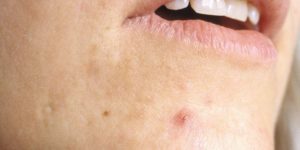
Causes of Cystic Acne
Skin pores contain sebaceous glands that secrete sebum, which is an oily substance. Overproduction of sebum and excess growth of skin cells makes the skin pores to become plugged. It is the perfect situation for the creation of acne.
The biggest factor that contributes to the formation of cystic acne is hormonal changes in the years of adolescence. Below mentioned are some of the common causes of cystic acne.
- Hormonal changes associated with pregnancy, menstrual cycle, and birth control
- Utilisation of hormone therapy
- Too much sweating and humidity
- Genetical causes
- Excess utilisation of greasy cosmetics, lotions, and cleaners
- Certain medications
- Too much tight clothing

Below-mentioned things do not cause cystic acne:
- Spicy or greasy foods
- Not washing the face properly
- Sexual activities and masturbation
- Chocolates
- Poor hygiene
Skin Care Tips to Get Rid of Cystic Acne
The treatment of cystic acne requires some self-care measures and treatment from a specialist doctor. Drug treatment can be highly effective in preventing scarring and cysts.
Moderate or mild acne can be treated with the help of a doctor. Nevertheless, treatment for severe acne characterized by cysts and nodules requires specialist treatment, as it might leave scars on your skin. Below mentioned are some of the popular treatments and skincare practices that you can use to reduce the swelling and redness caused due to cystic acne.
Begin with Cleaning Skin Using Salicylic Acid
Cystic pimples are different, and treatments that are effective for normal acne do not have the same effect on cystic acne. This type of acne is located underneath the skin. So it is better to exfoliate your skin using a salicylic cleanser.
A salicylic cleanser will help you in getting rid of excess oil in your pores. It will help you in creating a clear surface for using further products. If you have dry skin, continue using your normal cleanser and also use a salicylic cleanser only on the blemishes.
Take Care of the Swelling
Ice is one of the best effective remedies to reduce swelling, pain, redness, and itching. Ice cold temperature is helpful in constricting the blood vessels.
All you need to do is wrap ice in a clean towel and rub it gently against the bump until the cold temperature becomes uncomfortable. It will not only help in reducing swelling but will also decrease the redness. You can use this remedy three times a day for better results.
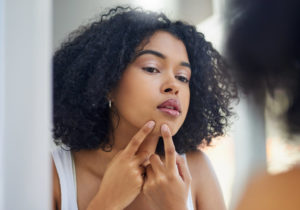
Tackle the Bacteria
In order to treat cyst acne, it is crucial to kill the bacteria causing it. Benzoyl peroxide is considered as an effective treatment to kill the bacteria responsible for cyst acne.
These bacterias are trapped in a follicle, which leads to inflammation. In order to avoid any irritation, prime your skin using a light moisturiser prior to using benzoyl peroxide.
After applying moisturizer, apply a super-thin layer of benzoyl peroxide on the cyst. Apply the lowest percentage of benzoyl peroxide. If it is too strong for your skin, you will feel stinging or burning. In such a case, wash it off immediately.
Reduce the Redness
The next step is to reduce the redness of the cyst. For reducing redness, you can use hydrocortisone cream having a low dose of steroids. It will help you in soothing redness and shrinking pimples. Use hydrocortisone treatment as a leave-on spot treatment.
Tips for Prevention of Cystic Acne
If you have mild acne, below mentioned are some of the tips to reduce the development of cyst acne.
- Clean the skin properly in the morning, after exercise, and before going to bed
- Do not touch the skin unnecessarily
- Do not overexpose the skin to the sun
- Wash your hair regularly, as people with oily scalp are more likely to get acne
In case of severe cyst acne, it is better to see your dermatologist. It will help you in getting rid of this acne rapidly and will also help you in avoiding further infection.

